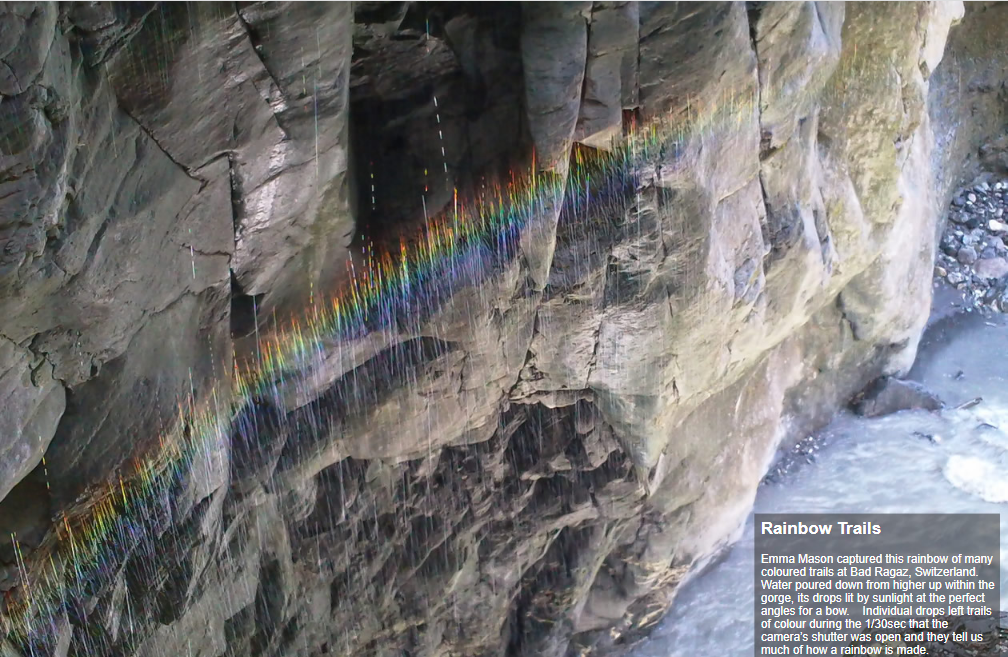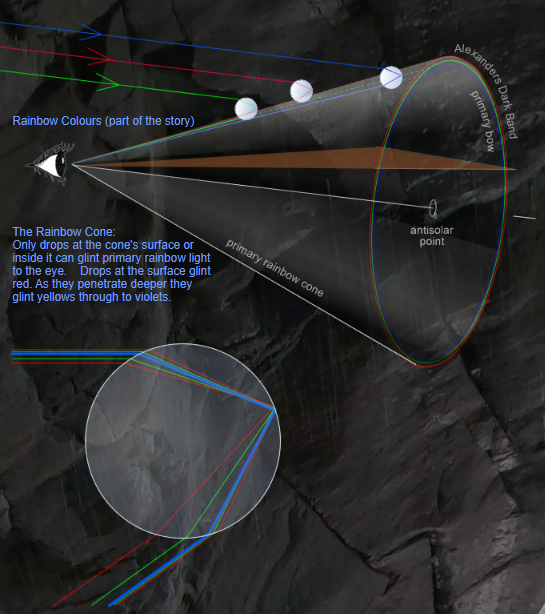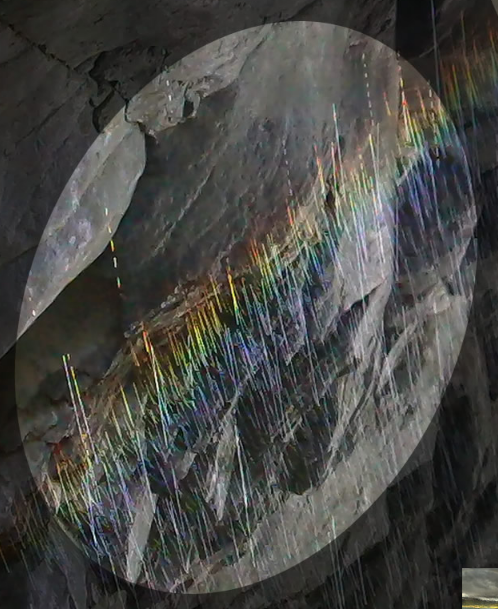OPOD - Rainbow Trails
OPOD - Rainbow Trails: A Closer Look at the Beauty and Complexity of Rainbows
Rainbows have long captivated our imagination with their vibrant colors and ethereal beauty. But have you ever wondered how a rainbow is made? In this article, we will take a closer look at rainbow trails, the intricate phenomenon that occurs when sunlight interacts with water droplets in the atmosphere.
When sunlight passes through water droplets in the air, it undergoes a process called refraction, where the light bends as it enters and exits the droplets. This bending of light causes the different colors of the spectrum to separate, creating the stunning display of a rainbow. But what exactly happens within each water droplet to produce this mesmerizing effect?
Inside a water droplet, the colors of the rainbow are created through a combination of refraction and reflection. As sunlight enters the droplet, it glints many colors, with each color corresponding to a specific angle of refraction. The most intense minimum deviation condition occurs for blue light, which glints blue but also sends out two red rays and two rays of all other longer wavelength colors. These additional colors, although faint, dilute the spectral purity of the blue light.
As we move deeper into the droplet, the colors glinted become more uniform in intensity, resulting in a white appearance. At the top left of the rainbow, drops of water can also create a faint secondary rainbow. However, most drops become invisible to us as they move further away from our line of sight.
Interestingly, there are some exceptional drops that deviate from the norm. These "oddballs" create a succession of primary rainbow hues, starting with red and progressing through orange, yellow, green, blue, indigo, and violet. The colors become progressively subdued towards the violet end of the spectrum. Even after the primary rainbow hues, these drops continue to emit ever-fainter white and gray glints. The reason for this continuous visibility lies in the geometry of the rainbow.
The primary rainbow glints occur within a cone extending from our eye, with its axis pointing towards the center of the rainbow, known as the anti-solar point. Drops outside this cone also produce primary rainbow light, but their light does not reach our eyes. These drops remain dark because they cannot send their light towards our line of sight.
As a water droplet moves into the cone, it first glints bright red at the minimum deviation position, where most red rays cluster to form a caustic. As the droplet continues its descent, it reaches the minimum deviation conditions for other colors, resulting in glints of yellow through to violet. This is the simplified version of the process described in most textbooks.
However, reality is far more complex and fascinating. Consider a drop that has moved a little way into the cone and is glinting blue light most intensely at the blue ray's minimum deviation condition. While blue light is dominant, other rays, such as two red rays and multiple rays of shorter wavelength colors, can still reach our eyes. These additional rays, although fainter, contribute to the overall glint and reduce the color saturation of the blue light.
As we delve deeper into the cone, all the individual colors emitted by each drop blend together in our eyes to create white light. This phenomenon can be observed in the top image, where the inside of the rainbow appears as a lighter sky. It is a remarkable opportunity to witness how each water droplet contributes to this luminous effect.
Now, let's explore some intriguing aspects of rainbow trails that add to their allure. Some trails may flicker on and off like strobes, while others exhibit color displacement or a ragged appearance. These variations can be attributed to certain factors:
-
Drop Shape: Rainbows are formed by almost perfectly spherical water droplets. When drops lose their sphericity due to wobbling or distortion, the resulting rainbow can appear blurred, distorted, or even destroyed.
-
Surface Tension Forces: Large drops with weaker surface tension forces can oscillate in shape as they fall, transitioning from oblate to prolate spheroids or other forms with flattened ends. This oscillation can cause the light passing through the drops to glint towards our eyes at some moments and not at others, leading to the flickering effect.
-
Drop Distortion: Drops that deviate slightly from perfect sphericity, such as those flattened by a few percent, can still produce a rainbow. However, the bow may no longer be perfectly circular, resulting in color shifts and non-uniform appearances.
In some cases, the enigmatic twinned bows, where two rainbows appear side by side, may arise from a combination of small, spherical drops and large, flattened drops. These drops of varying degrees of departure from sphericity contribute to the intricate trails observed in rainbows.
In conclusion, the study of rainbow trails offers a deeper understanding of the complexities underlying this natural phenomenon. By examining the interplay between light, water droplets, and geometry, we gain insight into the diverse colors, shapes, and behaviors displayed by rainbows. The next time you witness a rainbow gracing the sky, take a moment to appreciate the intricate dance of light and water that creates this awe-inspiring spectacle.

Rainbow Trails
Emma Mason captured this rainbow of many coloured trails at Bad Ragaz, Switzerland. Water poured down from higher up within the gorge, its drops lit by sunlight at the perfect angles for a bow. Individual drops left trails of colour during the 1/30sec that the camera’s shutter was open and they tell us much of how a rainbow is made.
©Emma Mason, shown with permission.

In reality, a drop slightly inside the cone glints many colours. Here a drop glinting blue at the most intense minimum deviation condition also sends out at the same angle two red rays and two rays of all other longer wavelength colours. The extra colours are faint but collectively they dilute the blue's spectral purity.
Deeper inside the cone the colours glinted are all of similar intensity and we see white.
High up at top left we see drops lighting a faint secondary rainbow. Then they become invisible to us. All but some oddballs talked about later. Then each drop flashes a succession of primary rainbow (not spectral!) hues starting with red through orange, yellows, greens, blues, indigos and violets. The colours get more subdued towards the violets. Their glints do not end there. They remain visible but only as ever fainter white and grey. Why?
Primary rainbow glints are all inside a cone extending from our eye and with its axis pointing towards the rainbow's centre, the anti-solar point opposite the sun. This is the �rainbow cone�. Drops outside the cone glint primary rainbow light just like those inside it but not to our eye. They cannot send their light towards the eye � they are dark.
As a drop plunges into the cone it first glints bright red. It is at the minimum deviation, MinDev, position where most red rays leaving it cluster forming a caustic. Then as the drop moves further, the MinDev conditions are reached in turn for other colours. The drop glints yellows through to violet.
That is the simple story of most textbooks.
Reality is richer. Let�s look at a drop (at lower left) when it has gone a little way into the cone - When it is glinting blue light towards us most intensely at the blue ray MinDev condition. Other rays than blue can still reach our eye. Two red rays can pass through the drop deviated through the same angle as the blue one. The red deviation angle is greater than the red MinDev angle but many red rays do that. Similarly for greens. Similarly for all colours of shorter wavelength than red. These are not bright MinDev ray clusters, they are fainter. But they are still there. They add their light to the glint making its colour less saturated.
Go far enough into the cone and all the individual colours emerging from each drop mix in the eye to make white. We see that in the top image. In a sky rainbow of millions of raindrops the white glow appears inside the bow as lighter sky. Here we are privileged to see how each drop makes that light.


Some trails flash on and off like strobes. Others have their colours displaced. The rainbow is ragged.
The flashing trails are probably from large wobbly oscillating drops. Rainbows need almost perfectly spherical drops. Lose that sphericity and the rainbow is blurred, distorted or destroyed.
Some of the strobed trails flash colours but not in a structured way. The constraining surface tension forces of large drops are relatively weak and they can oscillate in shape as they fall from oblate to prolate spheroids or through forms where one end is flattened. Light passing through these might sometimes glint towards the eye and not at other times.
Colour shifted trails probably result from a less severe distortion. Drops departing from sphericity by no more than a few percent, flattened for example, can still produce a bow but it is no longer circular. The enigmatic twinned bows might arise in this way when there are two drop populations - small and spherical and large flattened. In the macro peep at a rainbow presented here we are seeing trails from drops of varying degrees of departure from sphericity.
Note: this article has been automatically converted from the old site and may not appear as intended. You can find the original article here.
Reference Atmospheric Optics
If you use any of the definitions, information, or data presented on Atmospheric Optics, please copy the link or reference below to properly credit us as the reference source. Thank you!
-
<a href="https://atoptics.co.uk/blog/opod-rainbow-trails/">OPOD - Rainbow Trails</a>
-
"OPOD - Rainbow Trails". Atmospheric Optics. Accessed on November 23, 2024. https://atoptics.co.uk/blog/opod-rainbow-trails/.
-
"OPOD - Rainbow Trails". Atmospheric Optics, https://atoptics.co.uk/blog/opod-rainbow-trails/. Accessed 23 November, 2024
-
OPOD - Rainbow Trails. Atmospheric Optics. Retrieved from https://atoptics.co.uk/blog/opod-rainbow-trails/.